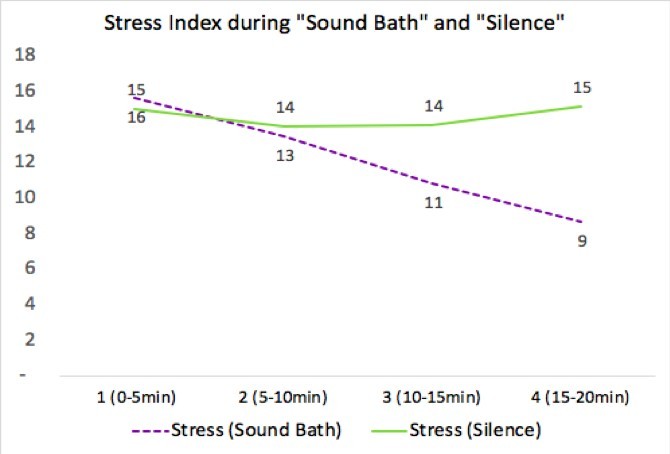SEE White Paper – Impact of Singing Bowl Sound Bath Session on Heart Rate Variability & Stress Index (A case report)
Authors: Kratika Motwani*, Aalia Lokhandawala*, Gunjan Y Trivedi
*Student, Year 3, Computer Engineering, Nirma University, Ahmedabad, India
Abstract:
This study explored the impact of sound bath session using Himalayan Singing Bowls’ on heart rate variability (HRV) and Stress Index (SI) parameters and compared it with the same parameters during silence for the same subject. The singing bowls are used for therapeutic intervention to enhance the individual’s emotional & physical well-being. For the case study, 7 metal singing bowls were used for 20 mins in a particular sequence learnt from an expert teacher.
The impact on the subject was measured using Emwave Pro device and the data was analyzed using Kubios HRV Premium software for obtaining heart rate, heart rate variability and stress index data. The subject first experienced sound bath with singing bowls and after 2 weeks went through similar session in silence. The singing bowl “sound bath” session resulted in more reduction in stress index and an increase in heart rate variability parameters, as compared to the changes during the “silence session”.
Increased relaxation observed during singing bowls session as compared to silence provides useful insights about the power of sound vibrations as compared to lying down in silence for the same duration. The case study also provides a confirmation that singing bowls session can be leveraged as a tool for inducing the relaxation response (increased parasympathetic tone, reduced stress) to facilitate healing and energy recovery. More comprehensive studies must be conducted to further evaluate the findings with the use of control group (silence).
Keywords:
Stress Index, Heart Rate Variability, Singing Bowl, Relaxation Response
Citation: Motwani, K; Lokhandwala, A; Trivedi; GY; Citation: Case Report – Impact of Singing Bowl Sound Bath Session on Heart Rate Variability & Stress Index; SEE White Paper, Sep 2019.
This study was conducted during summer of 2019. Click below to read the document. We encourage you to use the contents with a request to include the above citation to acknowledge the source.







